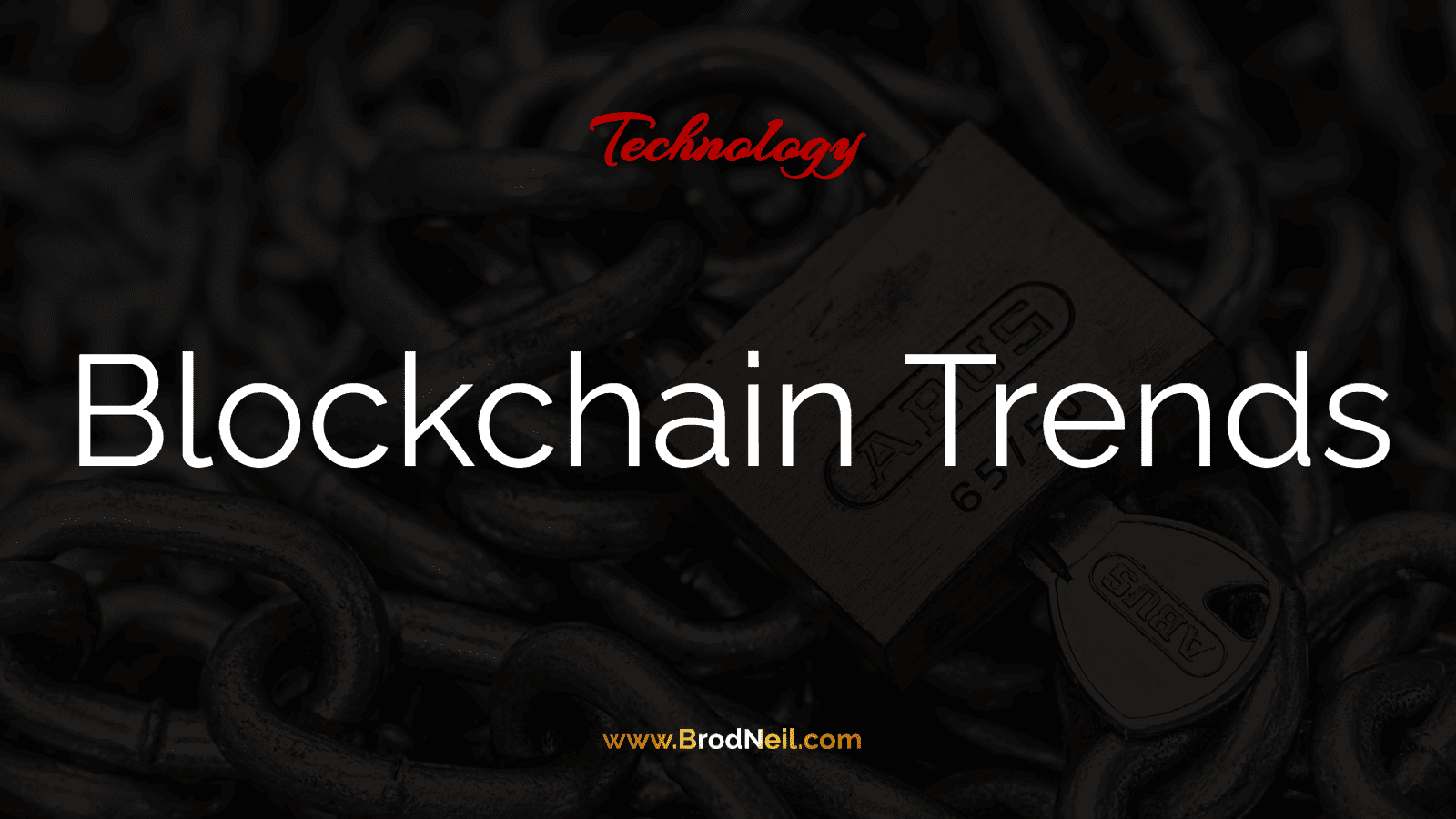Last Updated: 2 months ago by BrodNeil
Blockchain technology has been gaining momentum and evolving rapidly in recent years. As we look ahead to 2023, it’s crucial to understand the top blockchain trends that will shape the blockchain landscape. In this article, we will delve into the various facets of blockchain technology and explore its impact on different industries.
Understanding Blockchain Technology
Before we dive into the top trends, let’s take a closer look at the basics of blockchain technology. Blockchain is a decentralized and transparent digital ledger that securely records transactions across multiple computers. Each transaction, or block, is added to a chain of blocks, creating an immutable and tamper-resistant system.
With its distributed nature, blockchain eliminates the need for intermediaries, such as banks or governments, to verify and record transactions. It offers enhanced security, privacy, and efficiency compared to traditional centralized systems.
The Basics of Blockchain
Blockchain operates on a peer-to-peer network where participants, also known as nodes, validate and store transactions. These nodes work together to reach a consensus, ensuring all blockchain copies remain consistent.
Transactions added to the blockchain are encrypted and linked to previous transactions using cryptographic hashes. This technology ensures the integrity of the data and prevents unauthorized modifications.
Furthermore, blockchain technology employs a consensus mechanism, such as Proof of Work (PoW) or Proof of Stake (PoS), to validate and add new blocks to the chain. This process involves complex mathematical calculations or stake-based voting, respectively, to ensure the security and reliability of the network.
Blockchain’s transparency allows anyone to verify the authenticity and history of transactions. By providing a publicly accessible database, it promotes trust and fosters an environment of accountability. This transparency also enables auditing and regulatory compliance, as transactions can be easily traced and verified.
The Evolution of Blockchain Technology
Since its inception, blockchain technology has evolved beyond its original use in cryptocurrencies like Bitcoin. It has expanded into various industries and applications, driving innovation and reshaping existing processes.
Smart contracts, for example, leverage blockchain technology to execute self-executing contracts without intermediaries. These contracts automatically enforce predefined criteria, enabling parties to engage in secure and efficient transactions. Smart contracts can potentially revolutionize industries such as supply chain management, real estate, and intellectual property rights.
Additionally, blockchain has given rise to decentralized applications (dApps) and blockchain-based platforms. These platforms allow developers to build and deploy applications that operate on transparent and decentralized networks, altering traditional business models. Using blockchain’s features, dApps can offer increased security, data privacy, and user control compared to traditional centralized applications.
Moreover, blockchain technology has applications in healthcare, voting systems, and identity management. In healthcare, blockchain can facilitate secure and interoperable sharing of patient records, improving the efficiency and accuracy of medical treatments. Voting systems based on blockchain can enhance the transparency and integrity of elections, ensuring fair and tamper-proof results. Blockchain-based identity management solutions offer individuals control over their personal data, reducing the risk of identity theft and unauthorized access.
As blockchain technology continues to evolve, researchers and developers are exploring new concepts such as sharding, sidechains, and interoperability. Sharding aims to improve scalability by dividing the blockchain into smaller, more manageable parts, allowing for increased transaction throughput. Sidechains enable the creation of separate blockchains that can interact with the main blockchain, providing flexibility and scalability for specific use cases. Interoperability protocols seek to enable seamless communication and data exchange between different blockchain networks, fostering collaboration and expanding the potential applications of blockchain technology.
In conclusion, blockchain technology has come a long way since its inception. Its decentralized and transparent nature and its potential to revolutionize various industries make it a powerful tool for the future. As more organizations and individuals recognize its benefits, we can expect to see further advancements and innovative applications in the blockchain world.
The Rise of Decentralized Finance (DeFi)
One of the most significant trends in the blockchain space is the emergence of decentralized finance or DeFi. DeFi refers to decentralizing traditional financial systems and services using blockchain technology.
Decentralized finance has gained immense popularity in recent years, revolutionizing how we think about and interact with money. It has opened up a world of possibilities, enabling individuals to take control of their finances and access financial services without the need for intermediaries.
With the rise of DeFi, traditional financial systems are being challenged and disrupted. The decentralized nature of DeFi eliminates the need for intermediaries such as banks and brokers, allowing users to transact directly with each other.
One of the key advantages of DeFi is its ability to foster trust and reduce reliance on centralized authorities. By leveraging blockchain’s transparency and smart contracts, DeFi ensures that transactions are secure, transparent, and immutable.
The Impact of DeFi on Traditional Finance
DeFi offers an alternative to traditional financial intermediaries like banks and brokers. It allows users to access financial services, such as lending, borrowing, and trading, directly from their digital wallets.
This shift towards decentralized finance can potentially disrupt traditional financial systems in several ways. Firstly, it eliminates the need for intermediaries, reducing costs and increasing efficiency. Secondly, it opens financial services to a broader range of individuals, including the unbanked population.
With DeFi, anyone with an internet connection and a digital wallet can participate in the global financial system. This inclusivity has the potential to empower individuals and communities, enabling them to access financial services that were previously out of reach.
Furthermore, DeFi provides an opportunity for individuals to take control of their funds securely. With traditional financial systems, individuals often have to trust intermediaries to hold and manage their money. However, with DeFi, individuals have full control over their funds, reducing the risk of fraud or mismanagement.
Future Prospects of DeFi
The decentralized finance ecosystem continues to evolve and expand. As we move into 2023, we can expect DeFi to gain further mainstream adoption, fueled by technological advancements and regulatory developments.
New DeFi projects are constantly emerging, exploring innovative ways to enhance user experience and address scalability issues. These projects are focused on creating user-friendly interfaces and improving the overall accessibility of DeFi services.
Moreover, regulatory developments are playing a crucial role in shaping the future of DeFi. Governments and regulatory bodies are starting to recognize the potential of decentralized finance and are working towards creating a regulatory framework that fosters innovation while ensuring consumer protection.
With increased regulatory clarity, more traditional financial institutions are likely to enter the DeFi space, further bridging the gap between decentralized and centralized finance. This convergence could lead to a more integrated financial system that combines the best of both worlds.
In conclusion, the rise of decentralized finance can potentially revolutionize the global financial system. DeFi offers a more inclusive, transparent, and efficient alternative to traditional financial systems by leveraging blockchain technology. As we look towards the future, it is clear that DeFi will continue to evolve and shape how we think about and interact with money.
Blockchain and Internet of Things (IoT)
Another compelling trend in the blockchain landscape is its integration with the Internet of Things or IoT. IoT refers to the interconnection of various devices, enabling them to communicate and share data.
Enhancing IoT Security with Blockchain
Blockchain technology provides an additional layer of security for IoT devices. By storing device data on the blockchain, it becomes tamper-proof and less susceptible to unauthorized access or tampering.
Moreover, blockchain’s decentralized nature ensures that no single entity controls the data. This distributed control enhances the security and resilience of IoT networks, protecting them from single points of failure or malicious attacks.
Blockchain’s Role in IoT Data Management
Blockchain technology also addresses the challenges associated with data integrity and privacy in IoT. By leveraging blockchain’s immutability and transparency, IoT data can be verified and audited in real time, ensuring its accuracy and authenticity.
Furthermore, blockchain offers individuals greater control over their data by allowing them to grant or revoke access permissions. This empowers users to decide who can access their IoT-generated data, fostering a more transparent and consent-driven data ecosystem.
The Emergence of Non-Fungible Tokens (NFTs)
In recent years, non-fungible tokens, or NFTs, have taken the digital world by storm. NFTs are unique digital assets that can represent ownership or authenticity of digital or physical items.
The Influence of NFTs on Digital Art Market
NFTs have profoundly impacted the digital art market, revolutionizing how artists create, sell, and monetize their work. Artists can tokenize their digital artwork as NFTs, granting them ownership rights and enabling them to earn royalties whenever their art is sold or traded.
This technology addresses the issues of provenance and authenticity in the digital art world, providing a transparent and secure way to track ownership and copyright.
The Potential of NFTs Beyond Art
While NFTs gained initial popularity in art, their use cases extend far beyond that. NFTs can represent ownership of virtual real estate, in-game items, collectibles, and more. These digital assets can be sold, traded, or used in virtual worlds or blockchain-based games.
As the technology matures and becomes more accessible, we can anticipate NFTs reshaping various industries, including music, fashion, sports, and real estate.
Blockchain in Supply Chain Management
The utilization of blockchain technology in supply chain management is another trend that continues to gain traction. Blockchain offers transparency, traceability, and trust throughout the entire supply chain, from production to distribution.
Improving Transparency with Blockchain
Blockchain enables stakeholders to track and validate every step in the supply chain, ensuring transparency and mitigating the risk of fraud or counterfeiting. By capturing and recording transactions on the blockchain, the movement of goods becomes traceable and auditable.
This transparency ensures that consumers can access accurate and reliable information about the product’s origin, quality, and sustainability.
Blockchain’s Impact on Supply Chain Efficiency
By leveraging blockchain’s decentralized nature, supply chains can streamline operations and eliminate intermediaries. Smart contracts and IoT sensors enable automated and efficient tracking of goods, optimizing logistics and reducing costs.
Furthermore, blockchain-based supply chain solutions enhance trust and collaboration between stakeholders. Parties involved in the supply chain can securely share data without relying on centralized systems, fostering a more efficient and resilient ecosystem.
Blockchain Trends: Summary
As we explore the top blockchain trends in 2023, it becomes evident that blockchain technology continues to disrupt industries and redefine existing processes. Understanding the basics of blockchain, along with trends like DeFi, blockchain and IoT integration, NFTs, and blockchain in supply chain management, allows us to envision a future where decentralization, transparency, and trust are core pillars of our digital world.
As more advancements are made, blockchain technology will have a far-reaching impact, offering solutions to longstanding challenges and unlocking new opportunities across diverse sectors.
Keep an eye out for these trends in the coming years as they shape how we interact with technology and transform numerous aspects of our lives.
Related Topics:
- Cryptopunks: The Groundbreaking Intersection of Art and Blockchain
- Benefits of Incorporating NFTs IntoYour Business
Tara Mae Dela Cruz is a passionate writer and storyteller hailing from the Philippines. With a love for words and a vivid imagination, she weaves compelling tales that transport readers into captivating worlds. Her writing style is characterized by its lyrical prose and deep emotional resonance, drawing inspiration from her own experiences as well as the diverse cultures she encounters. Tara's work often explores themes of identity, family dynamics, and the power of human connection. When she's not writing, you can find Tara exploring new hiking trails or curled up with a good book, always seeking to broaden her horizons and find inspiration in the world around her.


